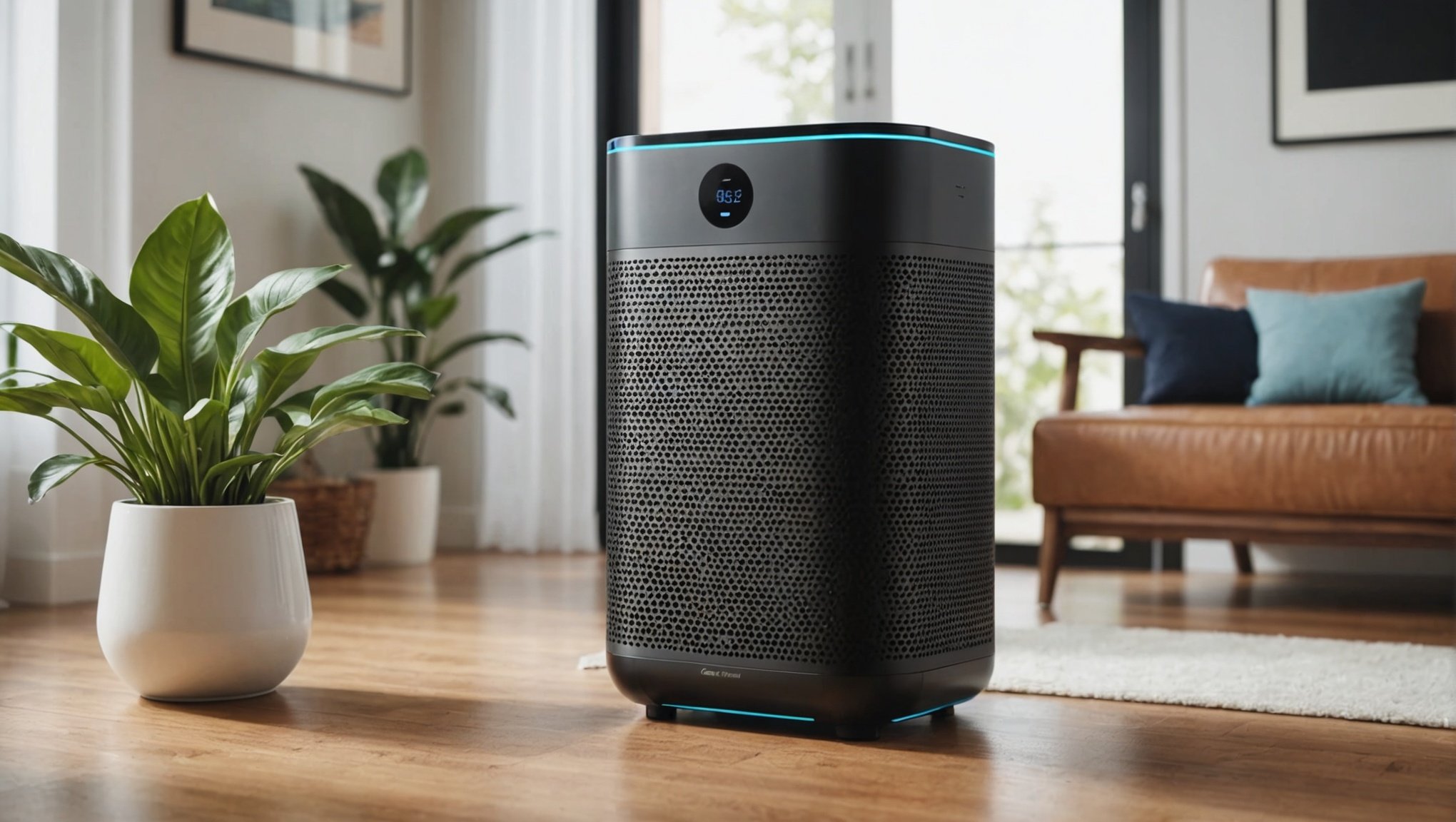In today’s tech-driven world, the concept of the smart home has rapidly evolved from a luxury to a necessity for many households. Amidst the myriad of smart devices available, smart home air purifiers stand out as essential tools for maintaining cleaner indoor air. Harnessing your smartphone to control these devices can significantly enhance their efficiency and your convenience. Here’s a comprehensive guide to help you navigate this digital landscape and transform your home environment.
Understanding Smart Home Air Purifiers
Smart home air purifiers are advanced versions of traditional air purifiers, designed to integrate seamlessly with your home’s smart ecosystem. These devices are equipped with Wi-Fi connectivity, enabling you to control and monitor them remotely via your smartphone. The goal is to ensure optimal air quality, even when you’re not at home.
Have you seen this : What Are the Best Techniques for Using Your Smartphone to Optimize Smart Home Lighting for Different Moods?
Primarily, smart home air purifiers work by drawing in air, passing it through a series of filters, and expelling purified air back into your living space. The integration with your smartphone allows you to adjust settings, monitor air quality levels, and receive notifications about maintenance needs, all at your fingertips.
The key to unlocking the full potential of these devices lies in understanding their features and functions. This includes comprehending how they interact with various elements of your smart home ecosystem, from other connected devices to home assistants like Amazon Alexa or Google Assistant.
Topic to read : What Are the Methods to Integrate Your Smartphone with Smart Home Security Cameras for Real-Time Alerts?
Setting Up Your Smart Home Air Purifier
The first step in harnessing the power of your smartphone to control a smart home air purifier is setting it up properly. This process typically begins with installing the manufacturer’s app on your smartphone, which will act as the central hub for all interactions with the device.
After downloading and installing the app, create an account if required and follow the onscreen instructions to connect the air purifier to your home’s Wi-Fi network. Ensure that your network is secure and that the air purifier is positioned within the range of the Wi-Fi signal for optimal connectivity.
Once the device is connected, you can start exploring the various settings and features available through the app. These may include scheduling, adjusting fan speeds, setting air quality targets, and monitoring filter usage. Familiarizing yourself with these functions will enable you to customize the air purifier’s operations according to your specific needs and preferences.
Moreover, many smart home air purifiers can be integrated with other smart home devices and platforms. For instance, you can link them with smart thermostats to create a more cohesive and efficient home environment. This interconnectivity not only enhances the performance of the air purifier but also contributes to overall energy efficiency and convenience.
Optimizing Air Purifier Performance through Smartphone Integration
Using your smartphone to control a smart home air purifier offers numerous benefits, particularly in terms of performance optimization. By leveraging the data and control options available through the app, you can ensure that your air purifier operates at its best, providing cleaner indoor air consistently.
One of the primary advantages of smartphone integration is the ability to monitor real-time air quality data. Most smart home air purifiers come equipped with sensors that detect various pollutants and particulate matter in the air. This data is relayed to your smartphone, allowing you to make informed decisions about when and how to operate the purifier.
Additionally, the app can send notifications and alerts regarding air quality changes, filter replacement needs, or maintenance requirements. This proactive approach helps in maintaining the efficiency of the air purifier and extending its lifespan. By staying informed and acting promptly, you can prevent any decline in performance and ensure a healthier living environment.
Another significant benefit is the ability to create customized schedules and automation routines. For instance, you can program the air purifier to run at higher speeds during peak pollution hours or to switch off when you’re away from home. These customizations not only enhance air quality but also contribute to energy savings and cost efficiency.
Enhancing User Experience with Voice Commands and Smart Home Integration
One of the most appealing aspects of smart home air purifiers is their compatibility with voice assistants like Amazon Alexa and Google Assistant. This feature allows you to control the device using simple voice commands, adding an extra layer of convenience to your smart home experience.
To enable this functionality, you need to link the air purifier’s app with your preferred voice assistant. This process typically involves enabling a specific skill or integration within the voice assistant’s app and following the instructions to sync the two devices. Once connected, you can control the air purifier with commands such as “Alexa, turn on the air purifier” or “Hey Google, set the air purifier to high.”
Voice commands can be particularly useful in situations where you need to adjust the air purifier settings quickly without using your smartphone. For example, if you’re cooking and notice an increase in indoor pollutants, you can simply instruct your voice assistant to ramp up the air purifier’s speed. This hands-free control enhances the overall user experience and ensures that your home environment remains comfortable and healthy.
Moreover, integrating the air purifier with other smart home devices can create a more cohesive and automated ecosystem. For instance, you can set up routines where the air purifier turns on automatically when sensors detect increased levels of pollutants or when the smart thermostat indicates that the HVAC system is running. These integrations not only improve air quality but also contribute to a more efficient and responsive home environment.
Troubleshooting Common Issues and Maximizing Longevity
Despite the advanced features and convenience offered by smart home air purifiers, you may encounter occasional issues or challenges. Addressing these promptly and effectively is crucial to ensuring the device’s optimal performance and longevity.
One common issue is connectivity problems between the air purifier and your home’s Wi-Fi network. This can result in intermittent control or data inconsistencies. To troubleshoot, ensure that the air purifier is within range of the Wi-Fi signal and that there are no obstructions or interference from other devices. Restarting the router or resetting the air purifier’s Wi-Fi settings can also help resolve connectivity issues.
Another potential challenge is related to the air purifier’s filters. Over time, filters can become clogged with pollutants, reducing the device’s efficiency. Most smart home air purifiers include notifications or indicators for filter replacement. It’s essential to follow these alerts and replace filters as needed to maintain optimal performance. Regular cleaning and maintenance, as recommended by the manufacturer, can further extend the lifespan of the filters and the air purifier itself.
Calibration and sensor accuracy can also impact the performance of your smart home air purifier. If you notice discrepancies in air quality readings, consider recalibrating the sensors as per the manufacturer’s instructions. Ensuring that the device is placed in an area with good airflow and minimal obstructions can also contribute to more accurate sensor readings.
Furthermore, staying updated with the latest firmware and app updates is crucial for the smooth operation of your smart home air purifier. Manufacturers often release updates to enhance functionality, fix bugs, and improve overall performance. Enabling automatic updates or regularly checking for updates within the app can help you stay current with the latest improvements.
Harnessing the power of your smartphone to control a smart home air purifier offers a myriad of benefits, from enhanced convenience to improved air quality. By understanding the setup process, optimizing performance through smartphone integration, leveraging voice commands, and addressing common issues, you can ensure that your air purifier operates at its best. Ultimately, this leads to a healthier and more comfortable living environment for you and your family.
Incorporating smart home technology into your daily life can be a game-changer, offering unparalleled control and efficiency. With the right approach and a bit of tech-savvy, you can transform your home into a haven of clean air and modern convenience. So, embrace the future of home automation and take a breath of fresh air, knowing that your smart home air purifier is working tirelessly to keep your indoor environment pristine.






